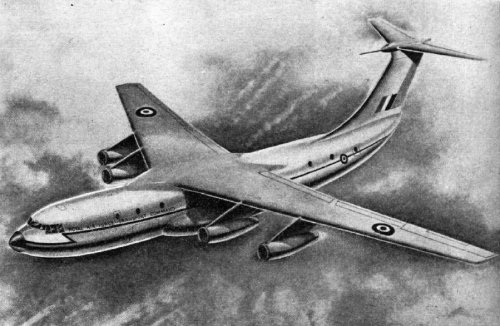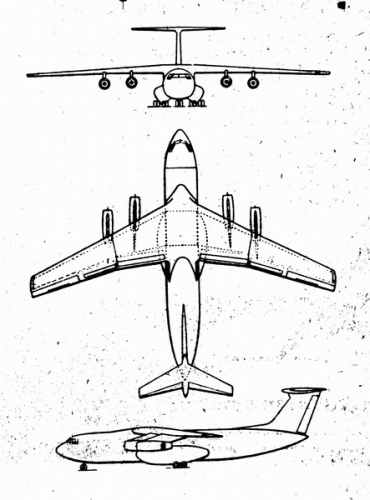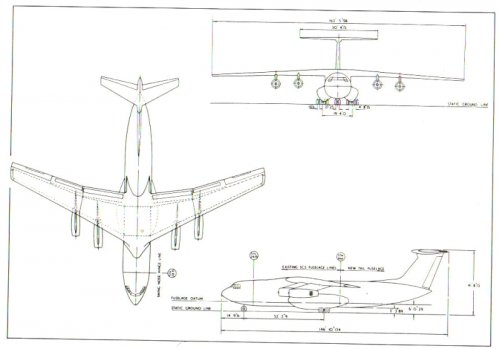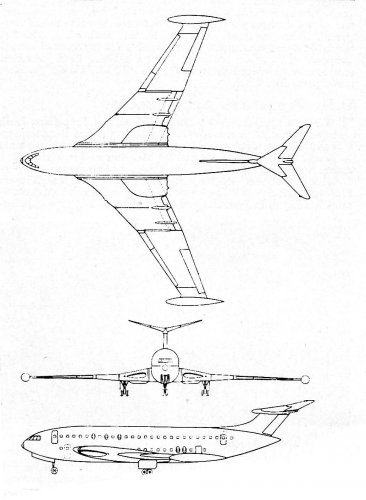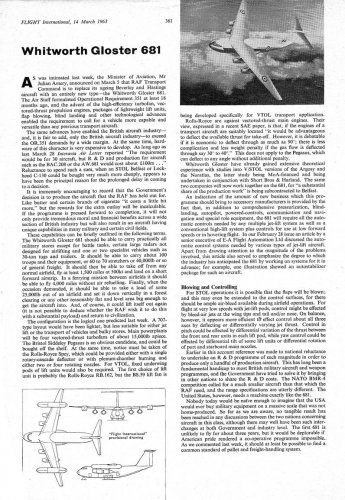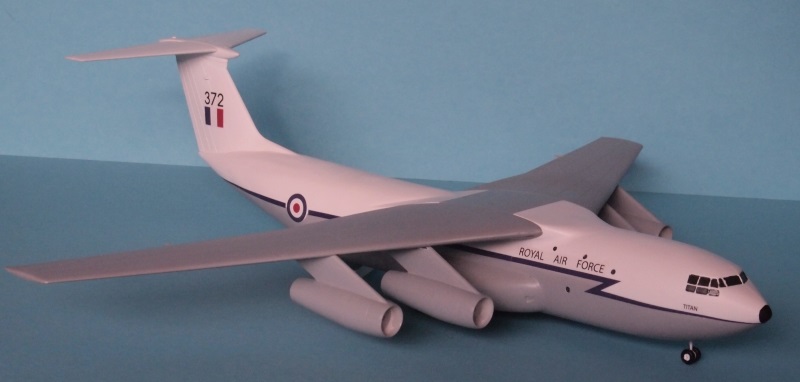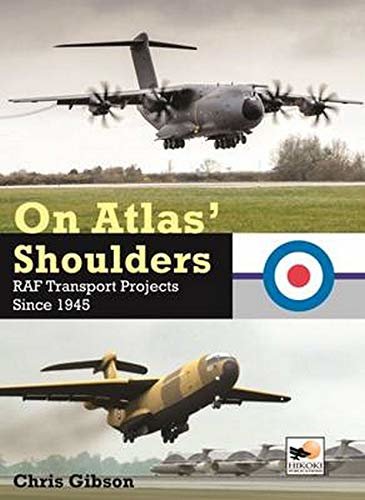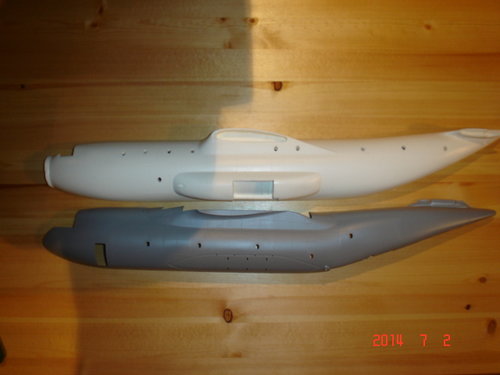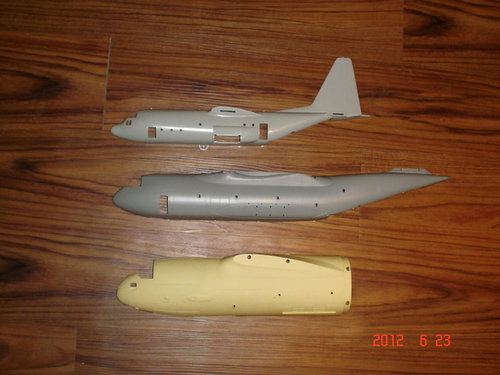Artist's impression of Shorts Jet Belfast. The proposed Jet Belfast would carry two decks of palletised cargo across the Atlantic at 500 mph. A swing nose would facilitate loading and the aircraft would be powered by four Rolls Royce Conway turbofans.
Source: Flight International August 23, 1963
http://www.flightglobal.com/pdfarchive/view/1963/1963%20-%201545.html
Source: Flight International August 23, 1963
http://www.flightglobal.com/pdfarchive/view/1963/1963%20-%201545.html

